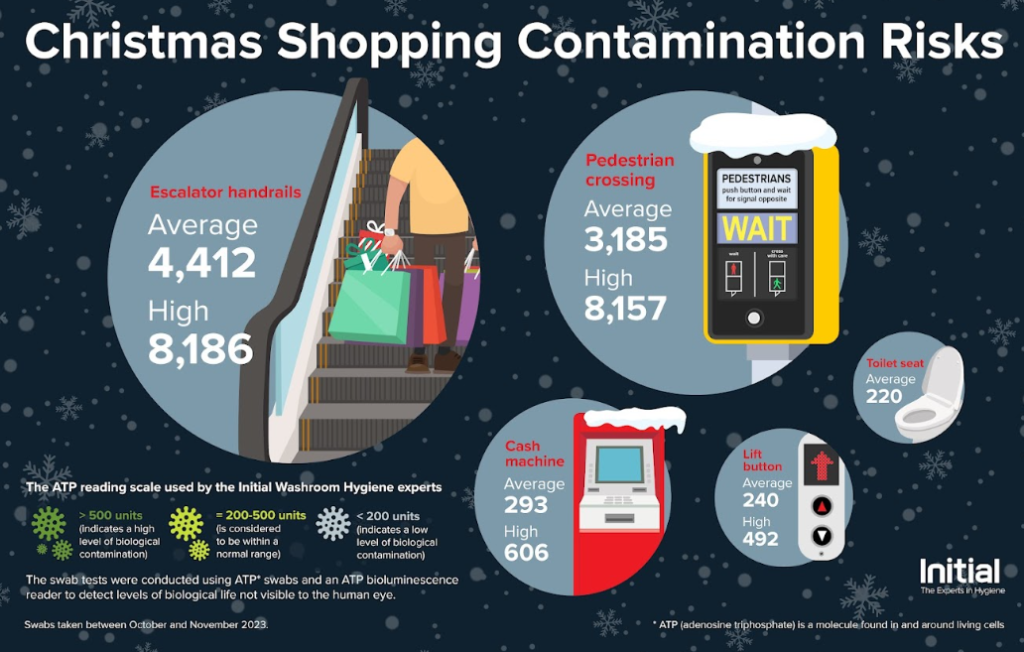Gold, frankincense and eughhh! Christmas shopping hotspots found to potentially harbour TWENTY TIMES more biological matter than a toilet seat
From cash machines to escalators, swabbing research by Initial Washroom Hygiene discovers a typical Christmas shopping trip could be a touchpoint minefield
Christmas shopping could be a bacterial obstacle course for Brits this year, with shoppers touching surfaces with potentially high levels of microbial contamination (germs). New figures, based on real-world swabbing tests, found that many of the hard-to-avoid things shoppers will touch could be harbouring 20 times more microbial contamination than a toilet seat.
The swab tests were conducted by experts at Initial Washroom Hygiene, using ATP* swabs and an ATP bioluminescence reader to detect levels of biological life not visible to the human eye. The tests were conducted on some common touchpoints that shoppers and sightseers are likely to encounter on a typical Christmas outing, such as escalator handrails, the buttons on pedestrian crossings, cash machines and lift buttons.
The analysis found that nearly two fifths (37%) of the touchpoints swabbed gave a reading of over 500 units** – indicating a high level of contamination – and some even displayed readings of over 8,000 units. Perhaps unsurprisingly, given the number of different people touching them, escalator handrails and pedestrian crossing buttons came out as the biggest hotspots for microbial contamination. Of them, eight in ten (80%) showed ‘significantly elevated’ surface readings, with some escalator handrails even found to have readings a whopping 20 times more than a typical toilet seat.
Christmas can be a particularly bad time when it comes to bacterial loads in high streets, shops and department stores, as they are busier than ever and full of people picking up multiple items when considering their gift purchases. With 80% of all infections transmitted through hands this can easily lead to the transmission of illnesses. The experts at Initial Washroom Hygiene recommend washing your hands regularly with soap and water, and following basic practices like covering your mouth when coughing in order to help reduce the transmission of seasonal illnesses.
Jamie Woodhall, UK Technical & Innovations Manager at Initial Washroom Hygiene, comments: “Touching things like cash machines and handrails is hard to avoid when out and about, especially on a festive outing. But with so many different hands coming into contact with these surfaces on a daily basis, they can easily accumulate high levels of contamination.
“Therefore, it’s more important than ever for businesses and public authorities to provide adequate handwashing facilities, as regular handwashing is a simple and effective way of helping to prevent the spread of bacteria and viruses. In their absence, carrying a small bottle of hand sanitiser in your bag or pocket is a good idea, and means you can keep your hands sanitised while on the move.”
|
Touchpoints (average + high counts recorded)
|
|
**The ATP reading scale of objects used by our hygiene experts: > 500 units (indicates a high level of biological contamination) = 200-500 units (is considered to be within a normal range) < 200 units (indicates a low level of biological contamination) |
* ATP (adenosine triphosphate) is a molecule found in and around living cells.



